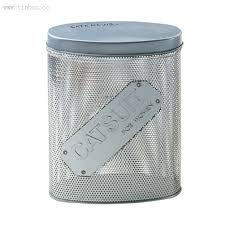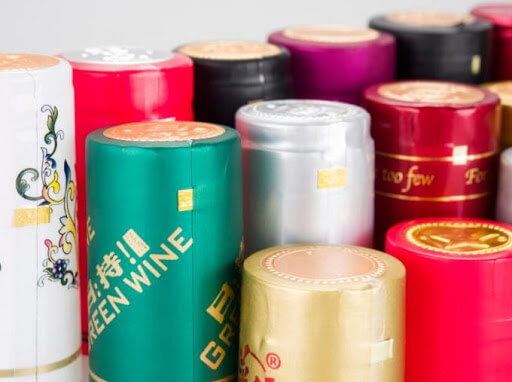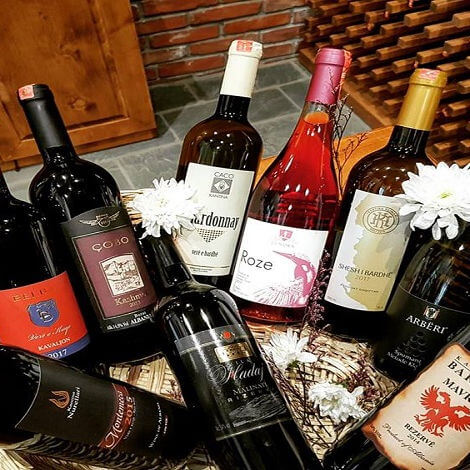7 verbazingwekkende feiten over fabrikanten van wijnflessen: (Wine Bottle Box Tin Review 2020)
Wat is het verschil tussen een metalen vat en een metalen blik?
Van blikopener tot fabrikanten van wijnflessen uit de 21e eeuw
Today you won't surprise anyone with wine bottle tin manufacturers. But, unfortunately, the overwhelming majority of beer lovers associate a can with something low-quality, cheap and wrong, so to speak. This stems from transnational corporations. These were among the first to use this type of packaging. But what exactly prompted them to turn to this beer container?
Problem # 1
Let's start with facts from history. The first request for the production of cans for bottling beer was received by the largest packaging company American Can Company (CANCO) back in 1909. The developers faced with two main tasks. Those require solutions to translate the idea into reality.
The main problem with the beer can at that time was the need to eliminate the "metallic taste". In general, we managed to cope with it. Although in 2019, more than 100 years later, there are wine bottle tin manufacturers. They claim that the taste of beer from a can is “not the same”.
Wine bottle tin manufacturers: Pressure of the beer
The second problem was the pressure of the beer, as it contains carbon dioxide. It makes the beer “carbonated”. Previously, canned food manufacturers have not faced such problems, and pressure has not been such a matter of principle.

To maintain the original flavor and carbonation in the beer, the can had to withstand a pressure of about 80 pounds per inch. This problem also solved back in 1909. Thanks to technical progress! It would seem that nothing prevented the launch of new high-tech packaging on the US market. But the project was implemented only 30 years later, and this is due to prohibition in America.
Industrial production
By the early 1930s, wine bottle tin manufacturers had developed a can strong enough to withstand the pressure of a poured beer. They also finally solved the can lining problem by using a resilient plastic called Vinylite.
Tests with Pabst beer were successful. But large breweries were afraid to use the novelty until the can was tested on the real market. Therefore, in June 1934, test packs of four cans of beer were delivered to 1,000 homes in Richmond, Virginia. Each package came by a questionnaire asking questions about the new package.
To the surprise of large corporations, the results were better than anyone expected. The new packaging got approval by 91% of respondents. And 85% said that beer tasted more like draft beer. They drank in bars than the same beer, but bottled. By January 1935, Kruger's beer was very popular throughout the city.
Modern wine bottle tin manufacturers
Since the launch, wine bottle tin manufacturers have undergone a number of changes. Until they came to their modern look, familiar to you and me.
The very first Flat Top Style beer can was a lighter and thinner version of the familiar can. To open such a can, a special device such as a can opener was required. But with all the inconvenience this type of beer can lasted until 1970.
Fabrikanten van
wijnflessen replaced the cans with a conical lid in the 50s by the Pull Tab or Tab Top Style. These were as similar as possible to the current beer cans and were already produced with a prototype of the modern "key". The principle of his work was the same as now - you pry the lock with your finger and the bank opens. The disadvantage that served as the rejection of this type of "key" was that beer consumers threw it away. From which pets and children often suffered.

Bank-vat verbinding
Laten we teruggaan naar de belangrijkste klacht over het bierblikje: de metaalachtige smaak. In de meeste gevallen is dit het argument dat voorop komt als we het hebben over de verschillen tussen gebotteld en ingeblikt bier. Maar waar komt deze metallic tint vandaan, en is die er? Laten we het uitzoeken.
Ten eerste is een bierblikje niet het enige metalen vat om bier in te schenken. Naast de glazen fles is er ook de meest voorkomende in de bierwereld: een metalen vat. Het is de belangrijkste container voor tapbier. We houden tenslotte allemaal van, als we naar de bar zijn gekomen, een glas of twee bier van de tap bestellen.
Wat is het verschil tussen een metalen vat en een metalen blik?
And no one ever talks about how they taste a metallic taste in draft beer. So what's the difference between a metal keg and a metal can? And why does one beer have this notorious taste, while the other does not?
The fact is that in a beer can the beer does not actually come into contact with metal. Because the metal is outside the can. But when opening and drinking beer, not from the glass, but from the can itself, we feel the aroma of metal. That is, it's not about the can or the beer, but about our perception. Therefore, in order to eliminate the taste of metal, it is necessary to pour the beer into a glass. It's simple.
Over het algemeen beschouwen wijnflessen als een mini-vat. Hierdoor krijg je vers getapt bier, zoals in je favoriete bar, voor slechts één, persoonlijk de jouwe, portie. Bovendien komt bier uit blik, in tegenstelling tot bier uit een vat, direct in contact met zuurstof op het moment dat het wordt geopend en in een glas wordt gegoten. Je krijgt dus bier precies zoals de brouwer het bedoeld heeft en werd gebrouwen in de brouwerij. Dit is naar onze mening een ongetwijfeld voordeel!
Pot of fles: wijnflessen
Het blik heeft ook enkele voordelen ten opzichte van de fles. In de eerste plaats laat een bierblikje geen zonlicht binnen, in tegenstelling tot een bierfles. Het is voornamelijk gemaakt van licht, bruin of groen glas. Donker glas beschermt veel beter tegen zonlicht dan licht glas, maar veel erger dan aluminium blik.
Dit vereenvoudigt de bewaarcondities aanzienlijk, en het niet naleven hiervan kan de smaak van uw favoriete bier beïnvloeden, waardoor het verre van beter verandert.
Het tweede voordeel is een vereenvoudigde logistiek en een lagere eindprijs. Mee eens, het is veel aangenamer om voor minder geld een product van hoge kwaliteit te krijgen.
Bank als marketingtool voor fabrikanten van wijnflesblikken
Een belangrijke reden dat veel moderne (ambachtelijke en niet alleen) brouwerijen beginnen over te stappen op een lijn voor het bottelen van ingeblikt bier is design. Door de vorm en het oppervlak van het blik kunnen wijnflessen meer informatie voor de consument plaatsen. Het zal een potentiële koper aantrekken.
De Schotse brouwerij BrewDog bedacht ooit een originele reclamebeweging met blikjes van de populairste variant Punk IPA. Een vermeend vergeetachtige werknemer van de bottellijn in de markeringsfase, in plaats van een datum, sloeg een veel voorkomende krachtterm uit.
Gevolgtrekking
Helaas is niets ter wereld perfect. En zelfs dergelijke high-tech wijnflessen verpakken, hebben nadelen. Een van de belangrijkste is de afwezigheid van gistsediment. Het is van cruciaal belang voor de meeste brouwerijen. Helaas komt tijdens deze processen kooldioxide vrij, stijgt de druk en kan het blikje gewoon exploderen.
De tweede reden is nogal esthetisch. Het is veel prettiger om een bierflesje in de hand te houden, hoewel de beste keuze dat wel is.


